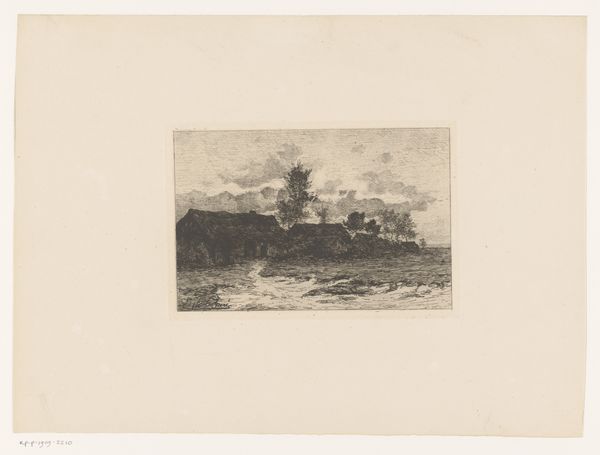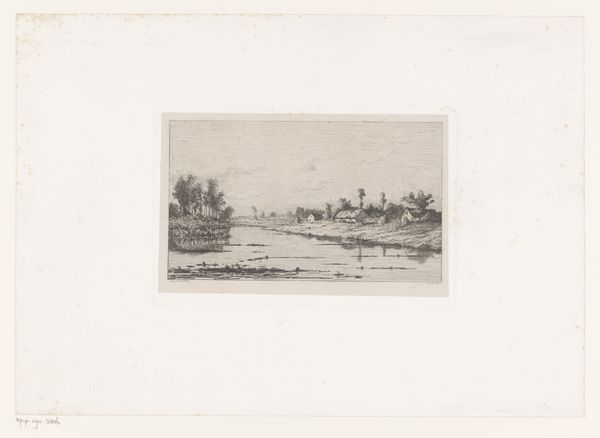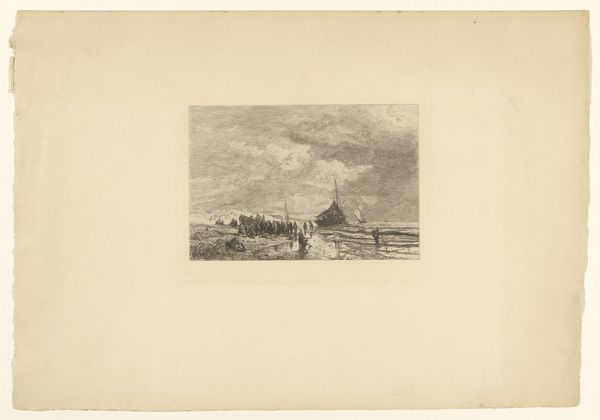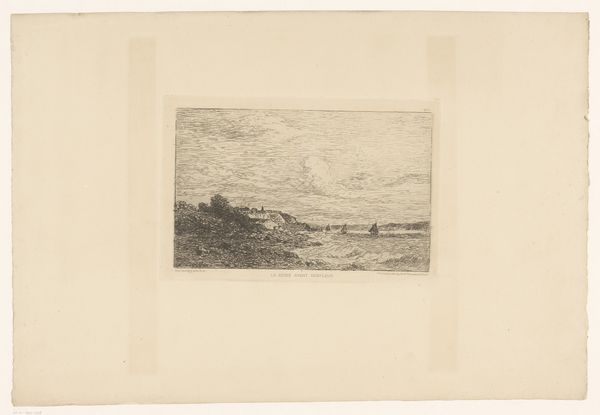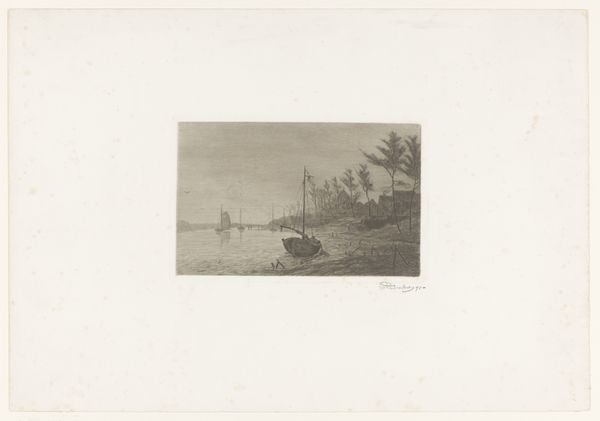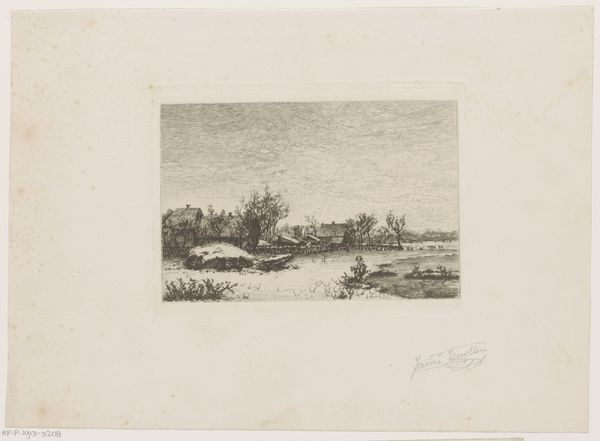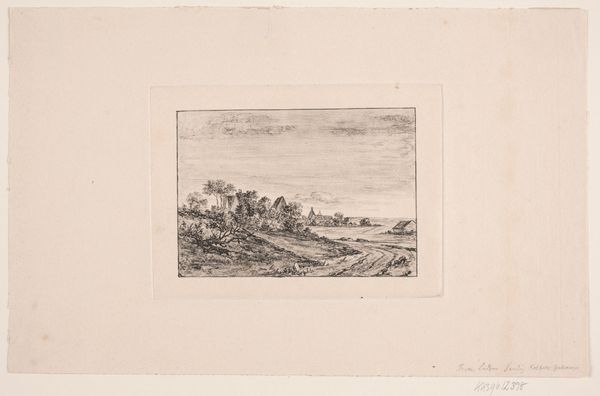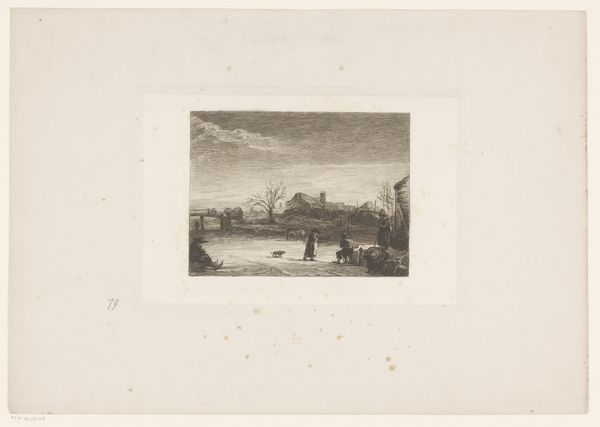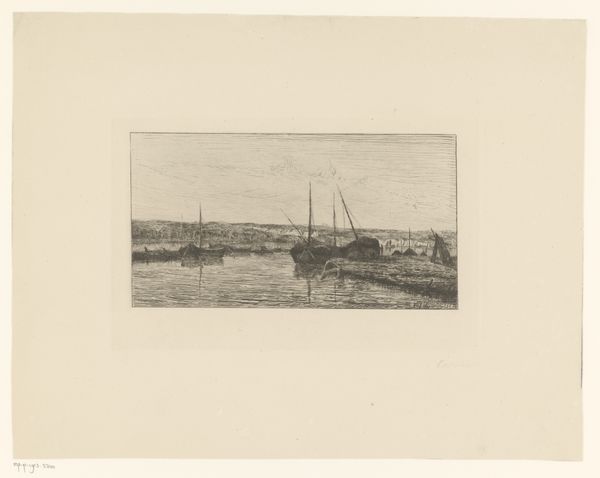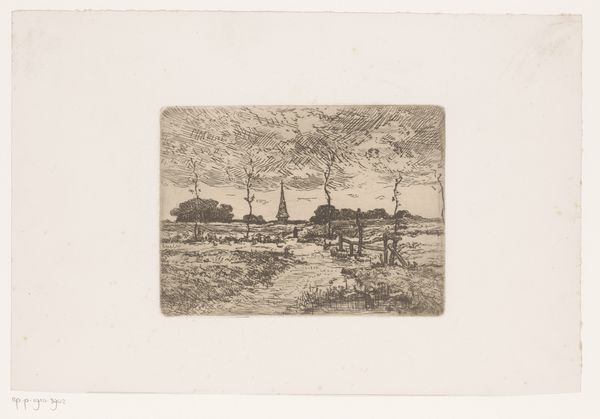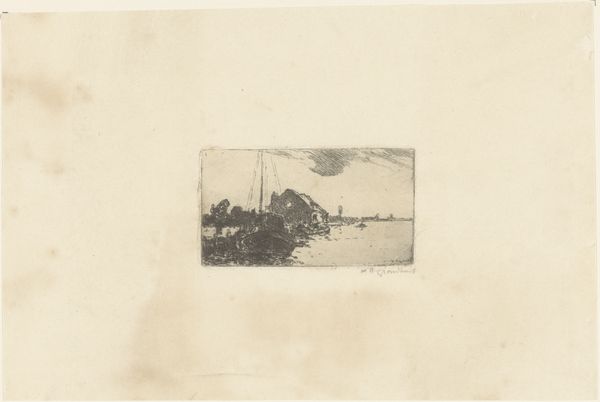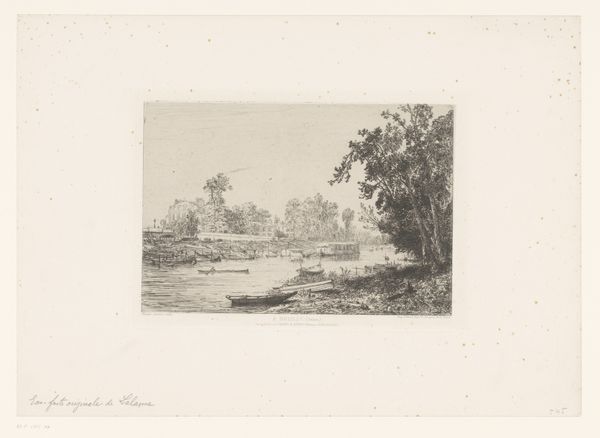
Dimensions: height 143 mm, width 189 mm
Copyright: Rijks Museum: Open Domain
Curator: This is "Landscape with Woman and Child on a Path," an etching made sometime between 1865 and 1910 by Louis Adolphe Jacobs, now at the Rijksmuseum. Editor: It's surprisingly bleak, isn't it? Despite depicting a seemingly bucolic scene, the lines are so scratchy, almost agitated. It feels less like a gentle landscape and more like a desolate field. Curator: Well, etchings often have that feel due to the nature of the medium. Think of the acid biting into the metal plate. The linear quality and tonal gradations play with romantic ideas but do embrace a sense of realism too, particularly in how Jacobs rendered the working-class figures, so close to the land. It has some kinship with Northern Renaissance prints in my eyes, that stark clarity. Editor: I’m interested in how labor and materials intersect here. Etching requires a very particular type of skilled labour, a different mode of production than say painting. The accessibility and replicability of prints is also worth exploring - these are affordable images circulating beyond the traditional art market. Curator: I find it fascinating how even within that accessible format, certain symbols persist, carrying cultural memory. A mother and child on a path is hardly a new motif. In many cultures, the journey or pilgrimage is a metaphor for life, and here, the presence of a woman and child certainly amplifies those themes of vulnerability, resilience, and continuity. Editor: True, but I also wonder if focusing solely on the iconography distracts us from considering who had access to these images and in what context they were displayed. Were these landscapes bought mostly by urban dwellers yearning for a lost connection to nature, or were they broadly consumed? We must acknowledge material conditions along with the visual cues. Curator: It seems, we find ourselves again circling themes of accessibility versus symbolism, with both threads deepening the richness of experiencing art. It really reflects art history as it actually lives in cultural awareness, doesn't it? Editor: Indeed. Recognizing the intricate dance between making, meaning, and marketplace offers a more complete understanding. The journey isn't just on that path, but also through the story of this artwork itself.
Comments
No comments
Be the first to comment and join the conversation on the ultimate creative platform.
